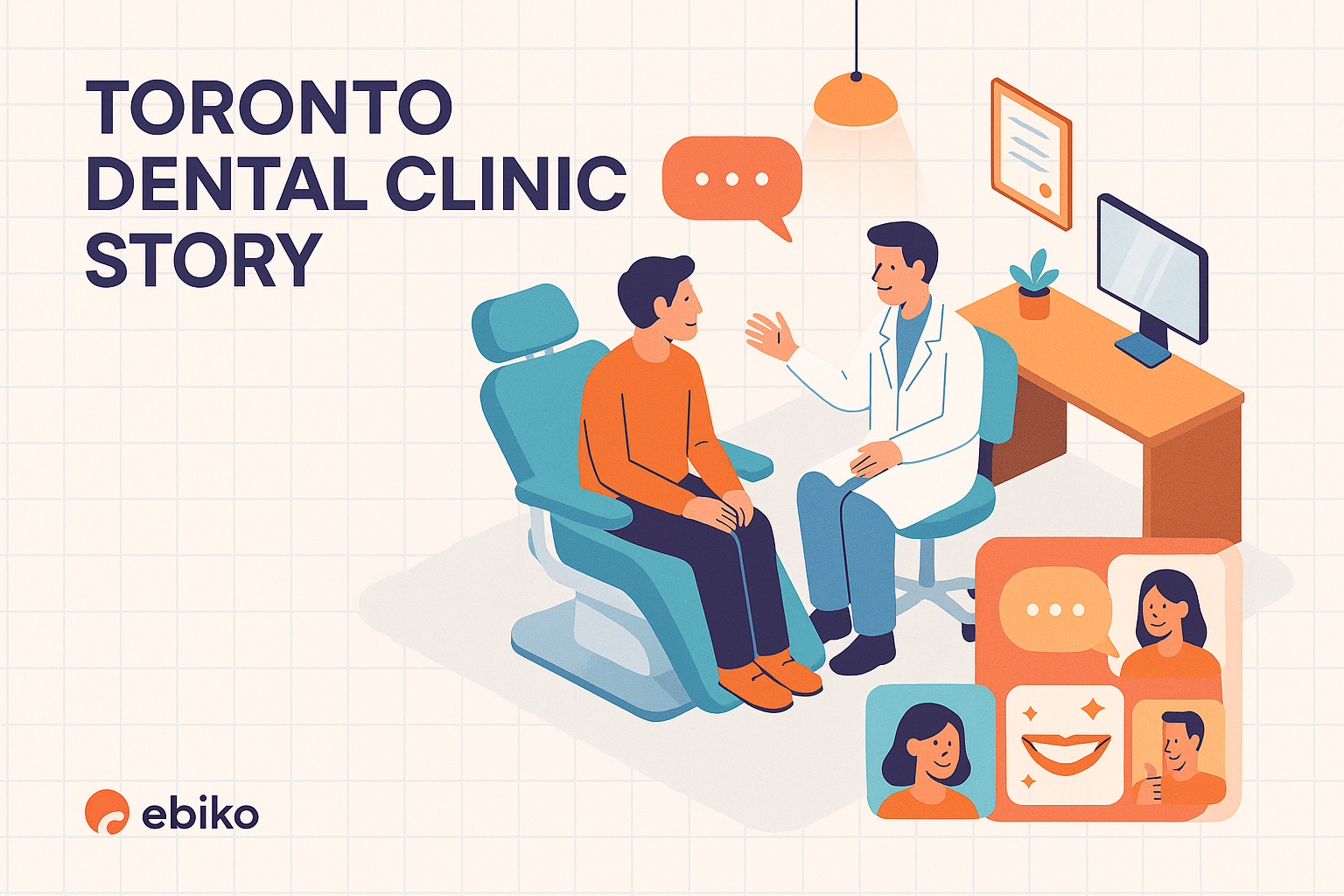Healthcare Storytelling in Dentistry: Building Patient Trust in Toronto
Trust is the cornerstone of healthcare. In dentistry, impactful storytelling offers a powerful approach to strengthen relationships, improve patient experiences, and shape the human side of care for clinics across Toronto and the GTA.
The Unique Role of Storytelling in Modern Dental Practices
Establishing trust in a dental setting is an evolving challenge. With increased patient skepticism during and post-COVID-19, Toronto-based clinics must find meaningful ways to rebuild patient confidence. Storytelling—when done with authenticity—helps transform cold clinical engagements into emotionally grounded, human-centred healthcare interactions. Through shared narratives, dental professionals can demonstrate commitment, compassion, and excellence beyond procedural outcomes.
Why Storytelling Matters to Dentists in the GTA
Patients choose dentists not only based on qualifications but the confidence and comfort they feel during initial interactions. Toronto’s competitive dental landscape—where patients have access to dozens of clinics in every neighbourhood—means establishing genuine trust distinguishes successful practices.
Storytelling personalizes the dental experience. It brings forward the emotional dimension of care—stories of overcoming dental anxiety, managing chronic conditions with confidence, or receiving life-changing prosthodontic support. These narratives create solidarity between practitioner and patient, and are particularly powerful when patients encounter them early in their care journey through your website or social media channels.
Key Lessons from Effective Dental Storytelling Campaigns
- Authenticity comes first: Raw, non-scripted testimonials drive greater emotional engagement.
- Different stages matter: Don’t just focus on outcomes—highlight first visits, interim care, recovery and follow-up experiences.
- Compliance is critical: Within Canada, adhere to PIPEDA and applicable provincial laws. In healthcare, best practice often aligns with American HIPAA standards as guidelines for secure consent.
- Diverse media formats: Blogs, short-form videos, patient interview reels, and photo-text hybrids each reach different patient segments.
- Evaluate impact: Measure video views, post engagements, lead conversions, and retention linked to published stories.
How to Identify Shareable Patient Stories in Toronto Clinics
The most impactful stories often come from routine conversations. Front-desk staff, dental hygienists, and treatment coordinators frequently interact with patients after procedures—these are ideal moments to identify prospective storytellers. Look for those who express gratitude, surprise, or relief. Maintain a feedback log or suggestion box to collect testimonials in a passive, unpressured manner.
Once a story is identified, personalized outreach with a consent form is essential. Documented approval and clarity around how the content will be used ensures ethical and compliant use of patient voices. For clinics using systems like intraoral cameras or digital imaging tools, before-and-after visuals can powerfully complement narratives within patient media consent boundaries.

Best Practices for Gathering Stories in a Clinical Setting
Building a repeatable and ethical process to collect patient stories involves a balance of structure and flexibility. Here’s how Toronto dental clinics can organize storytelling workflows:
- Create a content intake form: Include checkboxes for consent, preferred media (photo, video, written), and topic category (e.g., cosmetic dentistry journey, anxiety management, pediatric care).
- Empower all staff: Encourage team members who interact directly with patients to nominate stories or share patient compliments that can be followed up on later.
- Offer value back to storytellers: A small gift card, referral coupon, or feature on your clinic website can create a sense of partnership and appreciation.

The Best Channels to Distribute Story-Driven Content
Short-Form Video
Platforms like Instagram Reels, TikTok, and YouTube Shorts allow clinics to capture attention in under 60 seconds. A series of quick, thematic patient moments (e.g., “First Impression at XYZ Dental”) is more digestible than a single long testimonial.
Practice Blogs and Patient Education Pages
Story-based blog content also contributes to SEO and long-term search visibility. Highlighting a real patient’s use of a technology like Acteon X-Mind Prime Imaging or Dentmate curing light allows for education tied directly to real-life benefits.
Clinic Waiting Area Displays
Looping video profiles or rotating patient quotes with photos on an overhead display inside your waiting room reinforces positive sentiment among walk-in patients and referrals.

Scaling Without Losing the Patient Voice
As clinics expand or chain practices develop satellite locations across the GTA, consistency in tone and authenticity remains essential. Consider designating a “storytelling ambassador” at each location—someone connected to front-line staff and responsible for curating and sharing stories. A shared content library can maintain balance across linguistic, cultural, and procedural contexts.
Measuring the ROI of Narrative-Based Engagement
If storytelling is to become a core strategy in your marketing or patient communication plan, it must be measurable. Begin by tracking:
- Appointment inquiries generated from story-embedded landing pages
- Google Analytics dwell time for blog pages featuring patient stories
- Social media engagement per story-based post vs. standard updates
- Referral mentions during booking calls (“I saw Maria’s story on your site…")
Watch for Storytelling Pitfalls in Clinical Contexts
Even authentic initiatives can falter if not aligned with trust and sensitivity. Dental professionals must remain careful not to prioritize story-gathering over patient care or consent. Avoid repetitive or homogenous story types—diversity in patient age, background, dental concern, and treatment plan ensures stronger inclusion. Always check narratives for accuracy and revise only with patient approval.

Conclusion
Storytelling in dentistry is more than branding—it is a relational approach to building trust that thrives on integrity, transparency, and emotional connection. In places like Toronto and across the GTA’s multicultural communities, these narratives foster understanding and commitment, helping patients feel truly heard. For clinics that adopt structured and compliant storytelling workflows, the benefits can be long-lasting—from better word-of-mouth marketing to increased patient retention and community connection.

